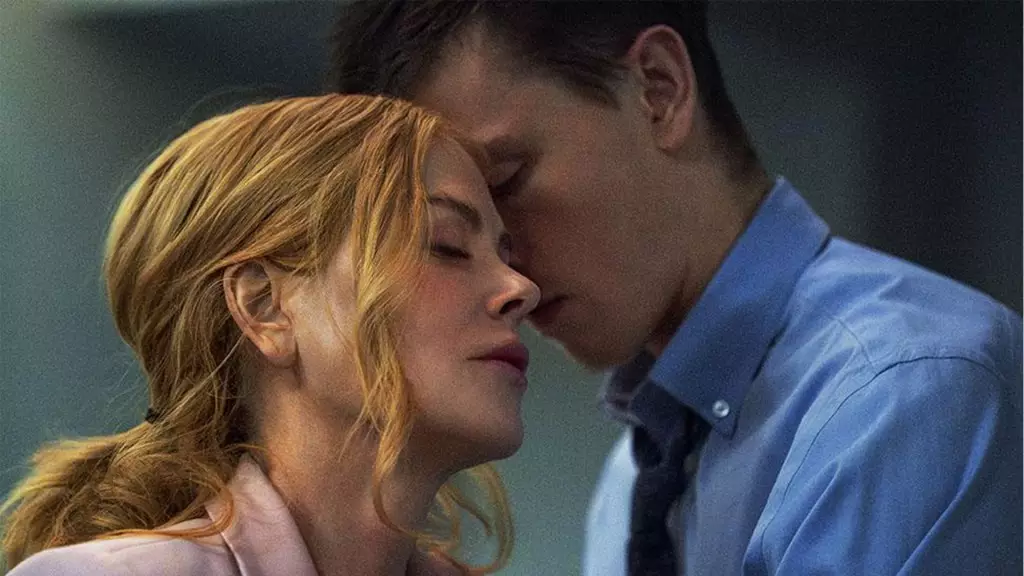Halina Reijn’s latest cinematic endeavor, “Babygirl,” invites its audience on an audacious exploration of desire that challenges traditional portrayals of sexuality in film. At the core of her story is a layered interaction between power dynamics and raw human instincts, encapsulated in a notable scene where Samuel (Harris Dickinson) sends Romy (Nicole Kidman) a glass of milk at a bar, compelling her to drink it. This single act, laden with deeper meanings, ignites a narrative fueled by both personal experience and a timeless archetype. Reijn’s approach underscores her belief that the complexities of arousal often reside in the subtleties of thought and suggestion rather than overt physicality.
A Personal Revelation
Reijn draws inspiration from her own life to craft a scene that blurs the boundaries between reality and fiction. Reflecting on a night when she felt particularly empowered on stage, she shares an encounter in a bar with a younger, notable Belgian actor who ordered her a glass of milk, a gesture she found exhilarating and brazen. This anecdote transcends mere recollection; it serves as a pivot upon which the film’s themes turn. By integrating her real-life experience into the narrative, Reijn highlights how personal encounters can shape artistic expression, showcasing the allure of innocence juxtaposed with a hidden undercurrent of seduction.
Milk, a commonplace beverage, takes on an unexpected duality within the context of “Babygirl.” Reijn articulates that this symbol represents the primal nature of desire, overshadowing its mundane appearance. The imagery of milk invokes associations with sustenance and childhood, yet Reijn cleverly infuses it with sexual undertones. This careful selection of symbols emphasizes her viewpoint that everyday objects can become instruments of erotic tension, inviting viewers to reconsider their associations with the world around them. For Reijn, the act of Romy consuming the milk signifies an embrace of vulnerability and power; it is a moment richly layered in implication, revealing much about both characters’ psyches.
Redefining Sexuality
One of the most compelling aspects of Reijn’s work is her definition of what constitutes true sexual arousal. Unlike traditional portrayals that prioritize physical encounters, she posits that genuine eroticism often exists in the realm of the mind, made manifest through suggestion and fantasy. To Reijn, sexual tension is driven by psychological interplay rather than sheer physicality. The film further illustrates this idea through scenes that rely heavily on slow, deliberate actions and unspoken desires rather than explicit sexual acts. For her, the act of a character crawling across a floor and indulging in something as innocuous as candy offers a heightened sense of eroticism that is infinitely more intriguing than conventional representations of sex.
In “Babygirl,” the juxtaposition of power and desire is evident in the relationship between Romy and Samuel. Romy, a powerful CEO, finds herself embroiled in a tumultuous affair with her much younger intern, a dynamic steeped in societal taboos. Reijn crafts their relationship as a complex interplay of control; while Romy wields professional authority, she is simultaneously vulnerable, revealing the intricate layers of both sexuality and ambition. This multidimensional portrayal challenges the viewer to contemplate the motivations behind their actions and desires, ultimately underscoring Reijn’s belief in the nuanced nature of human attraction.
As “Babygirl” pushes boundaries and invites discourse on sexuality and power, Reijn leaves viewers with more than mere titillation; she fosters a contemplation of their own desires and the narratives that inform them. By intertwining her personal experiences with thought-provoking themes, she crafts a cinematic experience that is both titillating and intellectually stimulating. As audiences engage with the film, they are encouraged to look beyond traditional depictions of intimacy, reflecting on the myriad forms that attraction can take. In “Babygirl,” Halina Reijn not only reveals the sexiness woven into the fabric of truth but also challenges us to redefine how we perceive and represent desire in contemporary cinema.

Leave a Reply